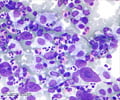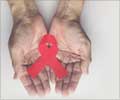- Harrison’s Principles of Internal Medicine 17th edition.
- Non–AIDS-Defining Malignancies in HIV. Top HIV Med. 2008;16(4):117-121.
- Cheung MC, Pantanowitz L, Dezube BJ. AIDS-Related Malignancies: Emerging Challenges in the Era of Highly Active Antiretroviral Therapy. The Oncologist 2005;10:412–426.
- Sullivan RJ, Pantanowitz L, Casper C, Stebbing J, and Dezube BJ. Epidemiology, pathophysiology and treatment of Kaposi sarcoma-associated herpesvirus disease: Kaposi sarcoma, primary effusion lymphoma, and multicentric Castleman disease. Clin Infect Dis. 2008 November 1; 47(9): 1209–1215.
- Pantanowitz L, and Dezube BJ. Evolving Spectrum and Incidence of Non-AIDS-Defining Malignancies. Curr Opin HIV AIDS. 2009 January ; 4(1): 27–34.
- Engels EA. Non-AIDS-defining malignancies in HIV-infected persons: etiologic puzzles, epidemiologic perils, prevention opportunities. AIDS. 2009 May 15; 23(8): 875–885.
What is AIDS Related Cancer?
People presenting with Acquired Immunodeficiency Syndrome (AIDS) have increased risk for cancers.
Kaposi’s sarcoma, non- Hodgkin’s lymphoma and cancer of the cervix should be suspected when they present with lesions that do not resolve. These patients have lowered immunity; hence viruses that cause cancer grow easily in them. The presence of the above mentioned three cancers in HIV patients indicates that they have progressed to a more serious stage of the disease. These cancers are termed as "AIDS defining malignancies." Hodgkin disease, multiple myeloma, and cancers of the lung, skin and digestive system are also often seen in HIV patients, but their presence does not indicate that the person is suffering from AIDS. They are termed as "non-AIDS defining malignancies."
In India there is a different spectrum of HIV associated malignancies.
Treatment of cancers is more difficult in HIV patients since they have lower immunity and tend to suffer more side effects of medications. With newer combination of drugs being used to treat HIV patients, the incidence of Kaposi’s sarcoma and non-Hodgkin’s lymphoma has come down. However, with the increase in life span, the non-AIDS defining malignancies are on the rise and should be watched for.














